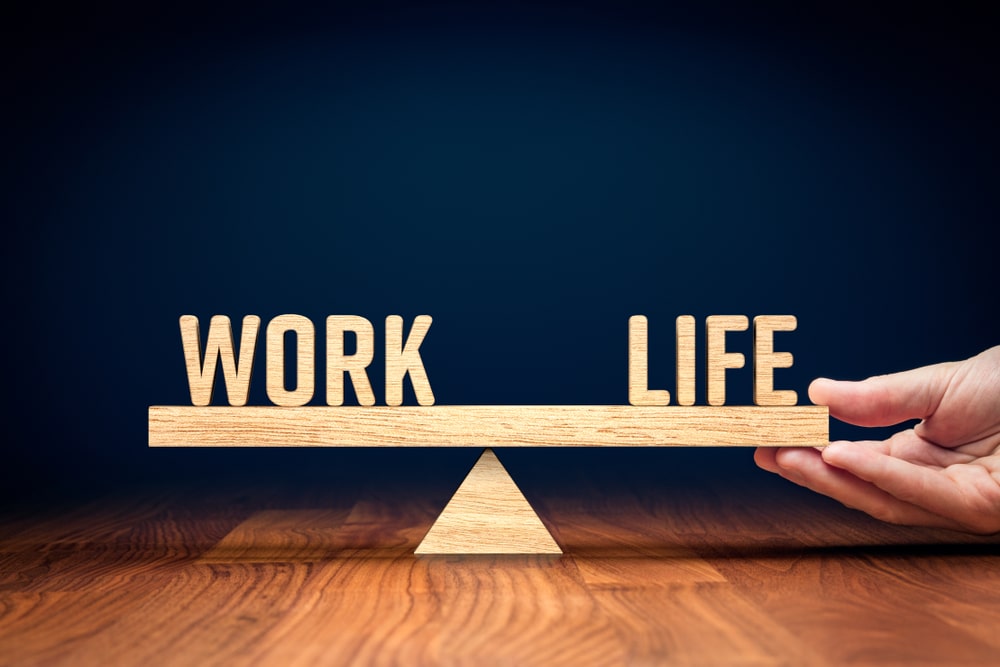Mike Pelfini — 30 July 2025
Did you know that leaders and workforce are more creative and productive when they strive for work-life balance?
Has work–life balance reached its “sell by” date? In late 2024, the Wall Street Journal reported that pandemic-era labor shortages had eased, and employers were back in control of the job market. The results included stricter “return to office” mandates, fewer perks, and stealth job cuts.
Fast forward to mid-2025 and the change is even more evident. In May, LinkedIn founder Reid Hoffman posted: “If a founder brags about ‘having a balanced life,’ I assume they’re not serious about winning.” And in July, the Wall Street Journal published a story about job ads offering the opposite of work-life balance:
Shopify wants candidates who can “keep up with an unrelenting pace.”
Healthcare marketplace Solace warns, “If you’re looking for work-life balance, this isn’t it.”
Software maker Rilla advised candidates “please don’t join” unless willing to work at least 70 hours per week.
Yet despite the tighter job market, work-life balance remains one of the top reasons people change jobs, according to Gallup. This article examines work-life balance – what it is, how it benefits organizations, and how leaders can help their teams to pursue it.
Why work-life balance matters
Professors Iona Lupu and Shanming Liu of ESSEC Business School write in the Harvard Business Review that, “[M]any high-performing professionals keep working at a punishing pace, even when it damages their health, relationships, and personal well-being[.]” The authors draw on a variety of studies to outline some of the negative consequences of this kind of “overwork,” including:
- Attrition due to burnout, especially among top performers;
- Limited opportunities for creativity;
- Lower workforce productivity with higher error rates; and,
- A “fragile work culture” prone to breaking apart without the “adrenaline of constant motion.”
Lupu and Liu write: “While high-tempo work cultures may appear efficient and productive in the short term, the long-term costs for organizations are substantial – and often underestimated.”
Author, business coach, and popular Vistage Worldwide speaker Maura Thomas goes further. Citing the work of Stanford economics professor John Pencavel, Thomas writes, “productivity per hour declines [at] around 50 hours per week, and working more than 55 hours is pointless.”
Thomas argues that fostering creativity among professionals and other “knowledge workers” requires more than simply grinding away at familiar tasks: “The more we do other things in addition to work . . . the more new neural pathways we can create, and this is an important way of increasing creativity.”
The idea that “brain work” benefits from variety is supported by a recent BBC report, which states: “Studies have shown that Nobel Prize-winning scientists are about 25 times more likely to sing, dance, or act than the average scientist. They are also 17 times more likely to create visual art, 12 times more likely to write poetry and four times more likely to be a musician.”
Taken as a whole, the studies above support the idea that not only is “overwork” a problem, but a lack of outside activities can make us less productive and creative. That’s why we need work-life balance.
How do we find work-life balance?
Author and psychologist Bryan Robinson writes that work-life balance is difficult to achieve, “[p]artly because no one agrees on what it means. There’s no consensus among experts on how to define work-life balance.”
Robinson highlights the work of psychologists Katina Sawyer and Patricia Grabarek, authors of Leading for Wellness: How to Create a Team Culture Where Everyone Thrives. Sawyer and Grabarek state that work-life balance is different for every person. According to Sawyer, “Many assume [work-life balance] means a perfect 50/50 split between work and personal life, but in reality, balance isn’t about the hours – it’s about how you feel.” Their main points include the following:
- Balance is individual: There is no “one-size-fits-all” formula for work-life balance. For example, some people are comfortable blending their personal and working lives, while others need to keep the two strictly separate.
- The balancing point changes: Balance isn’t a “set it and forget it” proposition. People need to reassess periodically what is and isn’t working. Circumstances change and so does the balancing point.
- Balance requires reflection: Keeping balanced means staying in touch with your feelings. Reflect on when you have felt balanced and prioritize doing the things that helped, whether it’s a morning workout or quiet time to decompress after work.
Leaders as role models
Psychologist Katina Sawyer calls leaders “work-life role models.” She says, “Our research . . . shows that when leaders protect their own boundaries, their team follows suit.” When leaders ignore those boundaries, the result can be what professors Lupu and Liu call a “culture of entrainment,” in which entire organizations are caught in a cycle of overwork and burnout.
Author Justin Bariso agrees, writing that, “Emotionally intelligent [leaders] recognize that they must take the lead and set the example. They prioritize health: physical, mental, emotional, spiritual. They make sure to get enough sleep, take weekends off, and go on vacation.”
Beyond setting an example, University of Georgia professor Malissa Clark recommends assessing where your organization currently stands in terms of work-life balance and beginning to make incremental changes as needed. These may include simple steps like not answering work emails after hours or using vacation time each year. She advises organizations to start small and make regular assessments of what is having a positive effect and what is not.
If you would like to learn more about work-life balance, and how leaders can set the tone for their organizations, please contact us.
==================================
ForeMeta offers breakthrough leadership coaching to develop CEO self-leadership and leading teams and organizations. We offer both individualized coaching or peer group coaching to help leaders and their teams achieve greater success. To get in touch with us, click here.
Copyright ©️ 2025 by Mike Pelfini. All rights reserved.


